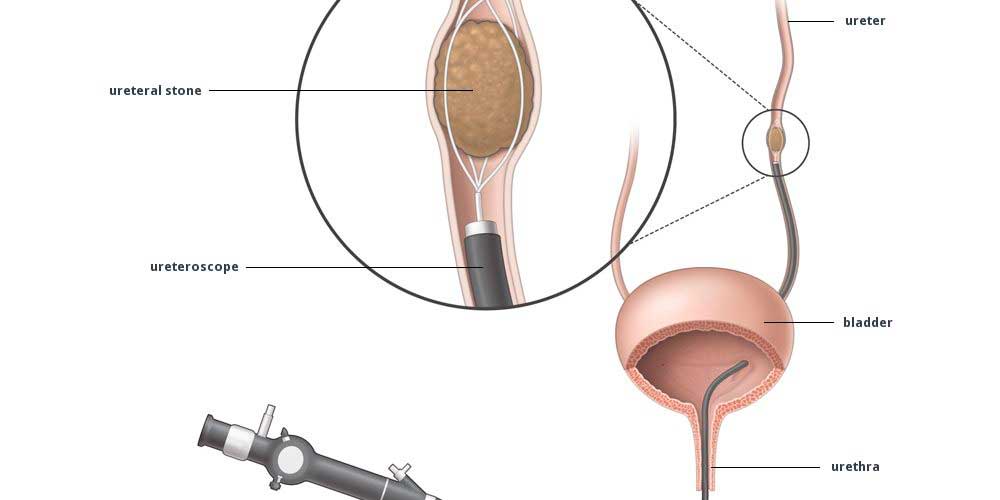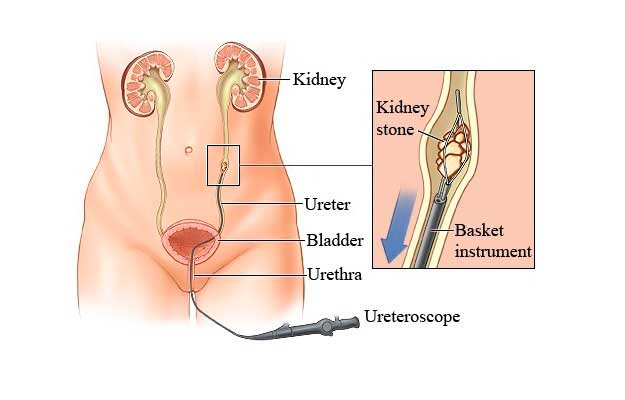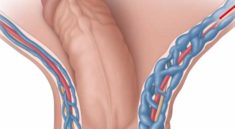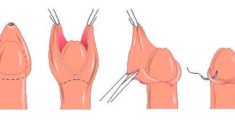
INFORMATION
URETEROSCOPY?
It is a procedure in which a small scope (like a flexible telescope) is inserted into the bladder and ureter and it is used to diagnose and treat a variety of problems in the urinary tract. For ureteral stones, it allows the urologist to actually look into the ureter, find the stone and remove it. The surgeon passes a tiny wire basket into the lower ureter via the bladder, grabs the stone and pulls the stone free. This is an outpatient procedure with or without a stent inserted (a tube that is placed in the ureter to hold it open).
However, depending on the skill and experience of the surgeon, ureteroscopy can be used for virtually any stone of a size appropriate for it. Fragmentation of stones using helium laser device ureteroscopy is more assured than with shock wave lithotripsy (SWL).
When is ureteroscopy used?
Most often ureteroscopy is used for stones in the ureter, especially for stones closest to the bladder, in the lower half of the ureter. lt is the most common treatment of lower ureteral stones. For stones in the kidney, shock wave lithotripsy (SWL) is the most common treatment. SWL treatment cannot be used in everyone. For patients who are pregnant, morbidly obese, or have a blood clotting disorder, ureteroscopy is a good choice. For very large or oddly shaped stones, or stones that are very hard, other treatments such as percutaneous nephrolithotomy or, rarely, open surgery may be needed.
Your doctor may suggest a ureteroscopy if you have one or more of the following conditions:
- Stones in the kidney or ureter.
- Blood in the urine.
- Unusual cells in a urine sample.
- Scarring of the ureter.
- A growth, polyp, tumor, or cancer in the ureter.
ls a basket always used during ureteroscopy?
Not always. In addition to the basket, the surgeon using ureteroscopy has several other options for stone treatment. lf the stone is too large or too tightly stuck in the ureter, it can be fragmented with a laser (pulsed dye laser), shock waves (high frequency sound waves) or electricaI energy (electrohydrauIic lithotripsy).
Will I be hospitalized?
Most often, it is an outpatient procedure.
What are the risks?
There is a small chance of infection, bleeding, or injury to the ureter. lf the ureter is too small a stent may be left in place for one or two weeks to keep the ureter open and then the procedure is performed at a later date.
How long does a Ureteroscopy take?
It may take up to 30 minutes for her to observe your urinary tract. If a procedure is done to remove or break up a stone, or to take a tissue sample for a biopsy, the ureteroscopy may take longer. A ureteroscopy that uses a laser to break up small kidney stones may take about 90 minutes
Is a Ureteroscopy painful?
Postoperative Pain: Most patients after ureteroscopy experience mild to moderate pain in the flank and/or bladder area. … Ureteral Stent: Almost always after ureteroscopy, a small tube called a ureteral stent will be placed.
What should I expect after a ureteroscopy?
- You should drink two 8-ounce glasses of water every hour in the two hours after the procedure.
- With your doctor’s permission, you may take a warm bath to relieve the pain.
- You can apply a warm, damp washcloth over the urethral opening.
How long do you bleed after a Ureteroscopy?
It is normal to experience some blood in your urine, including clot and debris, for 1-2 weeks after surgery or until the stent is removed. Bleeding may increase with activity. If this occurs, rest and drink lots of water until the urine clears.




